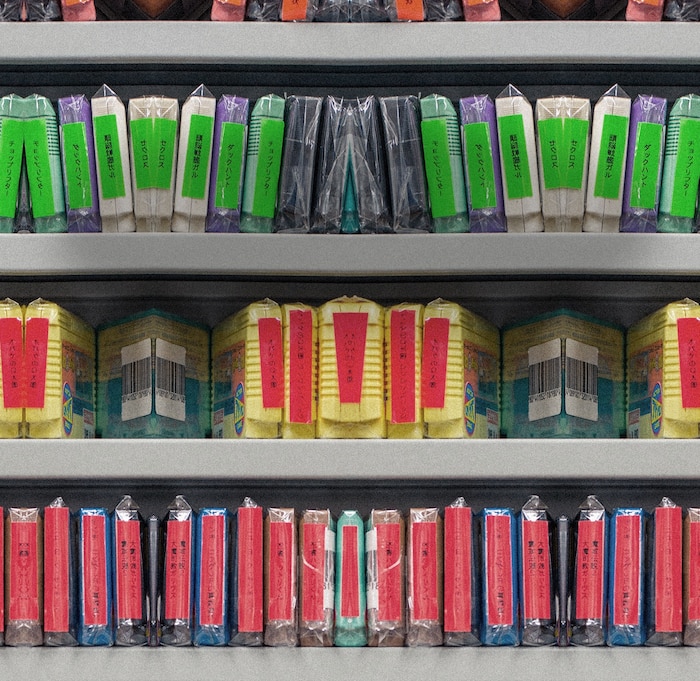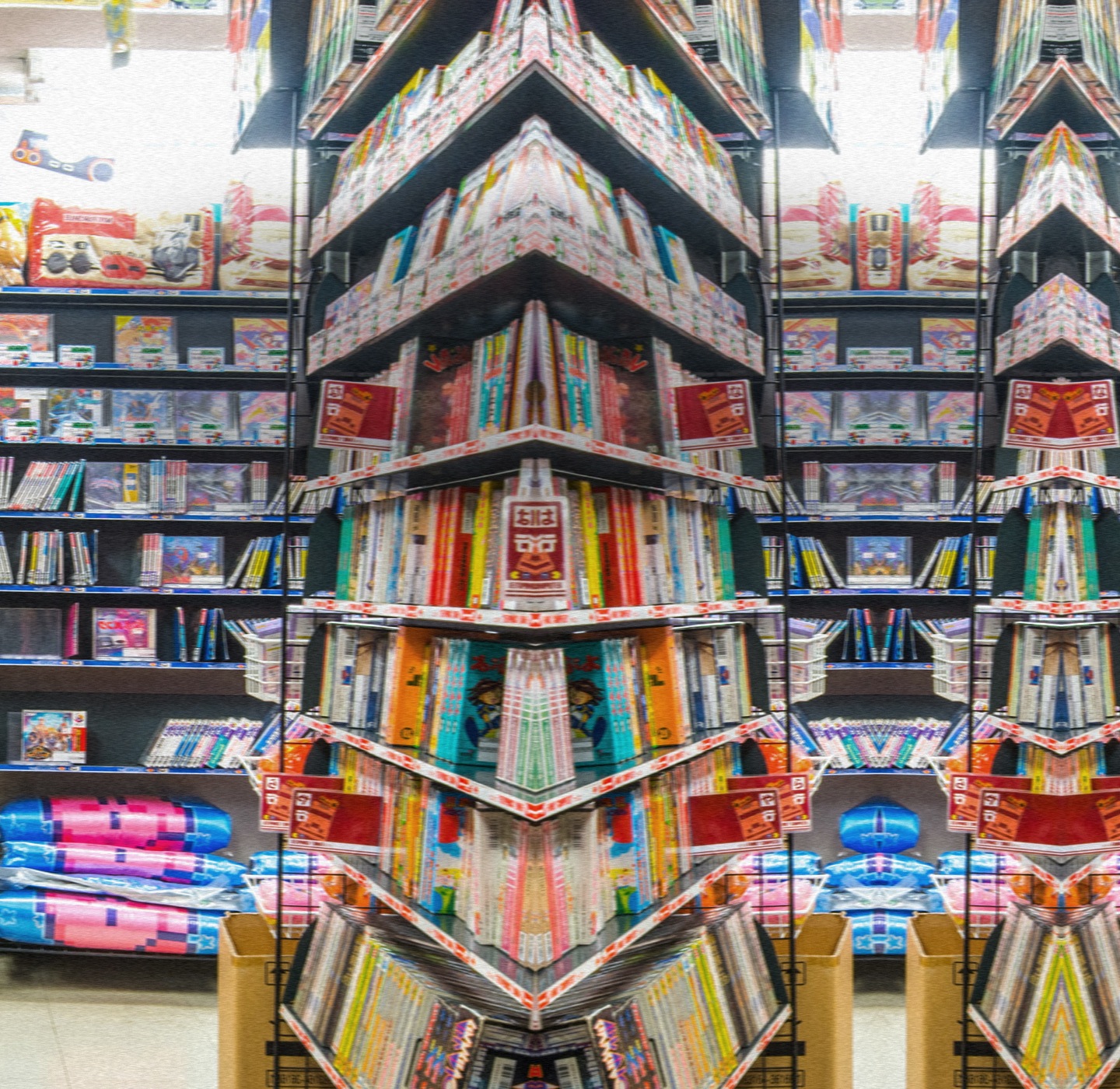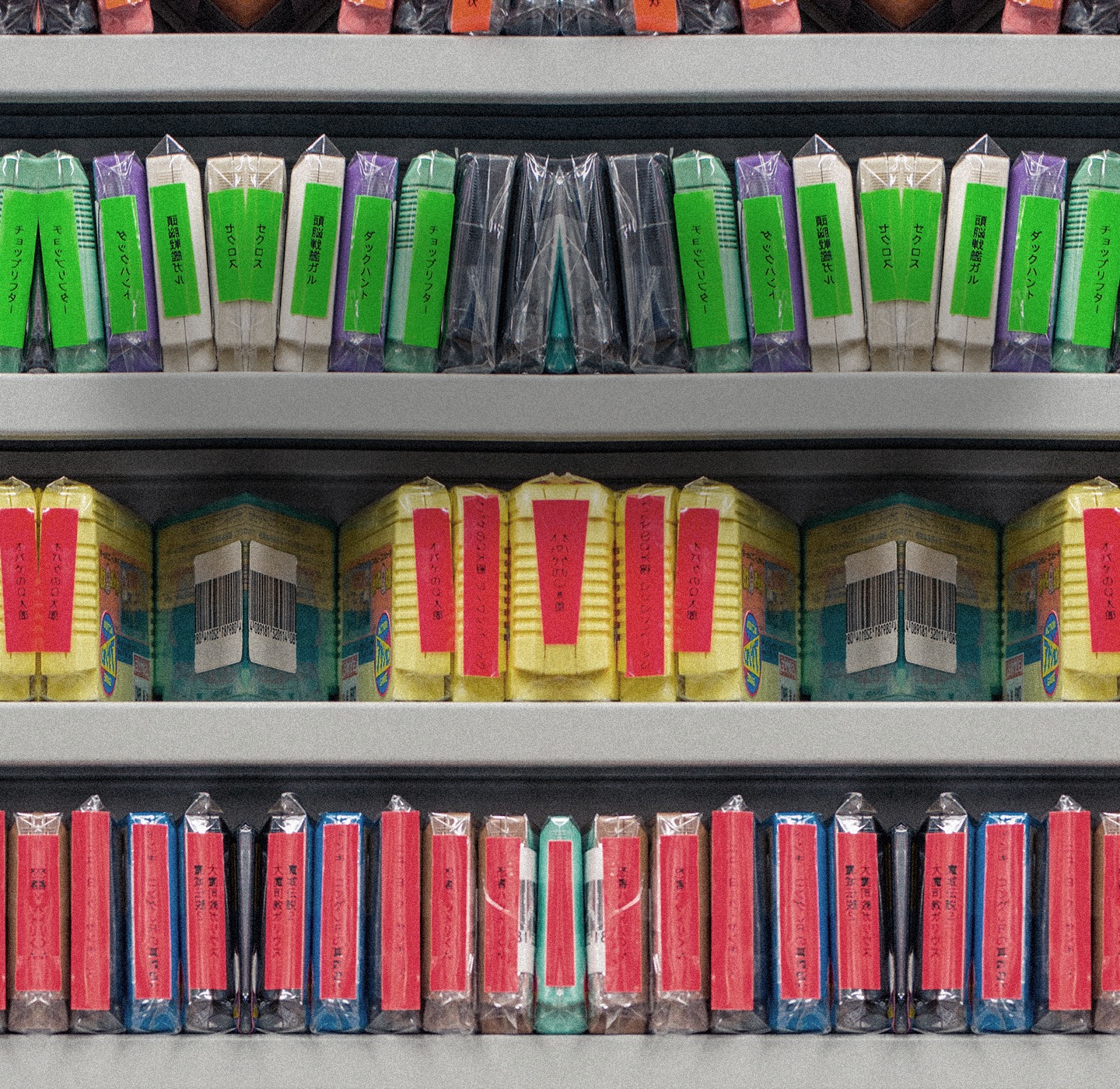Five Titans of Japanese Video Game Music on Their Influences and Key Creations
In these excerpts from Diggin’ in the Carts, our ongoing series on video game music, some of Japan’s most significant composers in the field spoke to Nick Dwyer about their early experiments and memorable experiences revolutionizing the format.
Tune into Diggin’ in the Carts on RBMA Radio every Thursday at 7 PM EST.

Takenobu Mitsuyoshi
[Joining S.S.T. Band] was one of the reasons why I joined [Sega]. When I joined Sega, I was working on video games for about a year. I was asked about a year later if I wanted to join the band. I was thinking, “Yes, just like I planned” to myself, with a big grin. In truth, I was just a regular office worker, and office workers don’t normally do things like playing a show at the big concert hall for thousands of people or release CDs, but it happened much faster than I thought. Performing live and releasing CDs was amazing, but it made me feel a bit bewildered.
I guess it’s my personality, but I like that kind of music festival feeling, and pumping up other people, so I was always trying to get the crowd going. 99% of people who came to see S.S.T Band were gamers, and in terms of men and women it was about 98% men. They didn’t go to gigs. They were kids who played games all the time and came because they thought there would be game music at the live show. We weren’t used to playing big shows, either, so we didn’t know how to work up a crowd of two thousand people. There were some professional musicians that played with us, but it was new to me, so when we played it was challenging, but it was fun. When playing in S.S.T. Band, I never felt like a rock star, basically. We were in a band as a hobby, so in a good way it was an extension of that. Even though the stage got to be that big, I didn’t have the feeling that I’d become a star.
Basically, we weren’t performers. We were creators. We were pros at making songs, and that came naturally, but when it came to performing, our skills weren’t so good. When we got up before a crowd and performed, we had to change from creators to performers, and practicing for that was really hard.
Manabu Namiki
I work at the company called M2 as a video game sound composer, sound creator, game designer and director. I’ve been making game music for more than twenty years now. As for why I make it, when I was a kid there were video games in the local sweet shops and on the roof of the department stores. The fun of playing them, and the sounds, which were beeping sounds back then, were things I really aspired to. I wanted to be involved in games in the future. Now I’m doing it.
The biggest appeal of making video game music for me is the way it matches the interactive elements of the game so well. Musically, it’s something very unique and very special. You can take out the music itself and enjoy listening to it, but immersing yourself in the game and listening while having fun is the best way to do it. It’s like a kind of high.
As for the shooting games that I’ve worked on, I never imagined over the past 20 years that people around the world would know the background music and soundtracks, and even say they are fans. It’s really been a recent thing. On social media like Twitter and Facebook, there are people from overseas who contact me and say they’re fans. When I learned there were fans like that, I was really surprised, but at the same time I was very honored. For over ten years – or really, close to 20 – I think it’s really great that I’ve been able to continue composing soundtracks for shooting games. I really feel like it was worth it now.
I really take care in making music that hits you as soon as you press start.
With shooting game music, compared to role-playing games, action games, sports games and so on, the biggest difference is that it’s very important to focus on a musical approach that can light a fire in the player’s heart as soon as he puts in a coin and presses the start button. The music I make first is often for the player selection screen. I never even think about music that gradually starts out quietly in the intro. I really take care in making music that hits you as soon as you press start.
With shooting games, there are horizontal scrolling ones and vertical scrolling ones… The characteristic style is what’s known as “Bullet Hell.” What’s typical of that style is that the player is quite a small target for enemies, and that can allow bullets to come raining down like curtains. The speed of the bullet is quite slow, but they are harder to avoid than it seems. It feels like you’re trapped sometimes, but if you use the joystick skillfully to slip between the gaps, you can avoid a crisis almost acrobatically. What I pay attention to is giving the player’s courage and have them become one with the music. I think about taking that high-end energy like you get when dancing in a club and connect it with the thrill of touching the bullets, or the feeling of achievement when you’re able to touch them.
Shinji Hosoe
When I was a student, a friend of mine told me that there was a part-time job where you could make money just playing games. I love games, so I jumped at the chance. I was playing games every day. Every so often, the developers came to watch us, and then they said they were looking for graphic designers. I said I’d help out, then I started working in the development department and I was drawing for a little while, but I wasn’t that good at drawing.
Instead, there were some unfinished games Namco was working on. They were boring because they had no sound. I thought maybe I could add some sound to them. There was a programmer who knew how to add sound, so he told me how to do it on the sly. After a while, I got them to move my part-time job to the sound department, which is how it started.
I’ve never studied composition and I started playing in cover bands when I was student, so I never composed and was only covering songs. It wasn’t until I joined Namco and was typing everything in that I first composed. When I was doing Dragon Spirit, it was really when I just started making music. I had no idea about influences or anything. I focused on how to add sounds. I didn’t know the how and why of music. It was really difficult, and I gradually got used to it while composing. It started becoming decent music, although I scrapped my first few tracks, and basically the remaining ones ended up becoming part of the product.
Yuzo Koshiro
I remember learning from Joe Hisaishi around my second or third year in elementary school. I was learning when I was eight or nine. The reason I ended up learning with him was because my mother taught the piano to his wife. I met him through that and was learning from him. At the time, he wasn’t as famous as he is now and was just doing a regular job in music. Since I was just a kid, I didn’t know much about the kind of work he was doing. He was making anime music and making something called minimal music by himself. When it comes to the things I learned from Joe Hisaishi, since I was so young I didn’t study anything about composition at all. The kinds of things I learned didn’t involve musical scores; he’d play an intro phrase and have me continue it. I had to make music on the fly and play it right there. I think that proved very useful to me.
Not just in gaming music, but in regular music, too, all the synthesizers before the FM synthesizer was released were analog synthesizers. Analog synthesizers could only make very synth-y, stereotypical synth sounds. With the introduction of FM synthesis, various instruments like string, wind and percussion instruments could all be played on one FM chip. Rather than generate computer sounds, when I first heard an FM synth in action, I thought it was a music from CD. When I first heard the music for Space Harrier at the arcade, it was so good that I thought there must have been a CD inside. Until then, I just accepted game sounds for what they were, since they were just games. It was the first time I thought music like a CD recording was playing. The drums sounded really cool. That was when it began. I think it changed everything.
I liked arcade games, so my view of Sega was as the coolest game company at the time. They had games like Space Harrier, and Hang-On, which had sit-down consoles, those big machines. They were games with impressive visuals and, of course, the sound was cool as well. It was only really Sega that was doing that.
Club music was growing in popularity overseas at the time. Club music wasn’t really known in Japan then, and was music for a select group of people only. The club music era would definitely come, especially in North America where the Mega Drive [Sega Genesis] was selling. Club songs were playing constantly on MTV and such. I knew they’d love club music, so I thought if I could put this into game music then they’d be really happy. With Streets of Rage, or Bare Knuckle, as it’s known in Japan, Sega didn’t tell me what music they wanted or give me any kind of direction. Since I only ever did stuff that I liked myself, I told them club music would definitely take off and I wanted it to be like that, and I gave them a demo. The manager of the consumer department at Sega back then really liked it. It was lucky. I think there were people in Sega who would have refused music that wasn’t really popular in Japan, but the manager really took a shine to it, so I was able to use club music in the game.
The club sound is something that’s ever-changing. The music I made for Streets of Rage 2 was more techno than the first game. That’s because it was techno and hard techno styles that I was hearing when I went to Yellow and other clubs. It helped me in getting more and more popular. I was aiming first at bringing new sounds, rather than trying to take it to the next level. I was hoping to make it sound more up-to-date when I made it.
Hiroshi Kawaguchi
After I joined [Sega], they learned about the fact I had sent games to programming magazines, so I was first hired as a programmer. I first wrote a game program for what must have been the SG-1000. It was a title called Girl’s Garden, and I worked together with the original Sonic programmer, Yuji Naka. Before long, I was making a bike game called Hang-On with Yu Suzuki. When we started development, it was our intention to make the music in a rock band style. That’s that time I was in a band outside of Sega as a hobby. Yu heard about that, and he asked me to write some songs, which ended up being on Hang-On.
At the time, rock band style music was pretty rare in games. It was coming out of the big Hang-On arcade machines. I listened to it myself while playing, and the feeling of excitement was a lot of fun. I realized again how fun it was to make game music. I continued with music from there.
As for memories of that time, I liked music, so expressing music through an arcade machine together with the visuals as a product was really exciting and fun for me. We could make music normally, but making music that fit the visual as a product was a great hurdle at the time. I felt really happy to be able to make a job out of that.
When I worked for Out Run, I liked Latin music at the time, and I was influenced quite a lot by a musician called Naoya Matsuoka, who passed away recently. I was listening to a lot of instrumental songs by artists like Masayoshi Takanaka and Casiopea, and I picked out elements I liked from those to make the Out Run series music.
The original concept of Out Run was as a driving game rather than a racing game. When you start a game, there’s a car radio, and you turn the dial to change the channel and select a song, the kind of thing you listen to when you go driving or touring. It was never meant to be a racing game. You took the car for a drive and enjoyed the fun feeling that came from that. I think that was important in the game. I would’ve been happiest if people had felt like they were actually in their own car with the radio playing.
The reason the Space Harrier music was different to other gaming music was probably because I never listened to other game music at the time at all. Of course, I did go to arcade occasionally, but I did not really play other games. I didn’t pay much attention to what other creators were making.
What I was aiming for was to take music that was different to game music, like band songs or CDs, and reproduce that kind of music on the gaming machine. That was my main goal, and it’s what I aimed for while making the music. I think that may be why the sounds turned out to be different to other games up to that point.
People would say it felt like futuristic music. I never really thought about it as futuristic music. Of course, the game had a futuristic setting, and people flew in the sky, so it did have those aspects, but I didn’t really try to compose futuristic music. I wanted to create the floating feeling, like flying through the sky.

